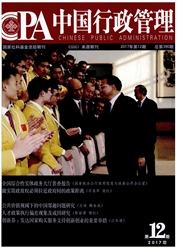

 中文摘要:
中文摘要:
为描述和衡量区域大气污染合作治理,从府际间政策差异与协同两个方面开展系统分析,探讨府际差异引致的合作治理趋势与挑战,以及府际协同中的共同行动与落实机制进展。基于政策文献外部属性和内部结构两个维度,构建“时间—主体—目标—工具—机制”的政策“差异—协同”分析框架,对京津冀及周边地区大气污染治理政策开展量化分析。研究发现,京津冀及周边地区大气污染治理政策中“自上而下”协同与“跨行政区”差异并存,呈现出中央带动地方-响应速度差异、目标考核协同—治理指标差异、工具导向一致—具体举措差异等特征,同时存在府际联合发文少、对市场型和公众参与型工具重视程度不足等问题。研究表明,基于政策文献的量化研究,可以为京津冀大气污染合作治理政策分析提供一个新的视角,为政策文献与政策实践的有效对话提供切入点。
 英文摘要:
英文摘要:
To describe and measure the cooperative control on regional air pollution, this paper systematically analyzes this problem from two aspects, i.e the difference and synergy between policies of different governments, it discusses the cooperative control trend and challenges created by such government policy differences, as well as the common actions and implementation mechanism in government collaboration. Based on external properties and internal structure of policy documents, the paper establishes an analysis framework of "time-institute- objective-tools-mechanism", thus to conduct an empirical analysis on air pollution control policy of Beijing- Tianjin-Hebei and the surrounding areas. Based on the study, it' s found that, in regional air pollution control, "up-to-down" synergy coexists with "Inter-administrative" difference and shows some characteristics such as central-driven but local-response speed difference, objective assessments synergy-control indicator difference and tools orientation consistence-specific measures difference, and also the disadvantages such as insufficient governments jointly issued notices, less attention to market and public participation tools. The study shows that, based on quantitative study on policy document, a new perspective may be provided for analysis on air pollution control policies in Beijing-Tianjin-Hebei and the surrounding areas, and meanwhile, it provides an entry point for the effective dialog about policy document and policy practice.
 同期刊论文项目
同期刊论文项目
 同项目期刊论文
同项目期刊论文
 期刊信息
期刊信息
